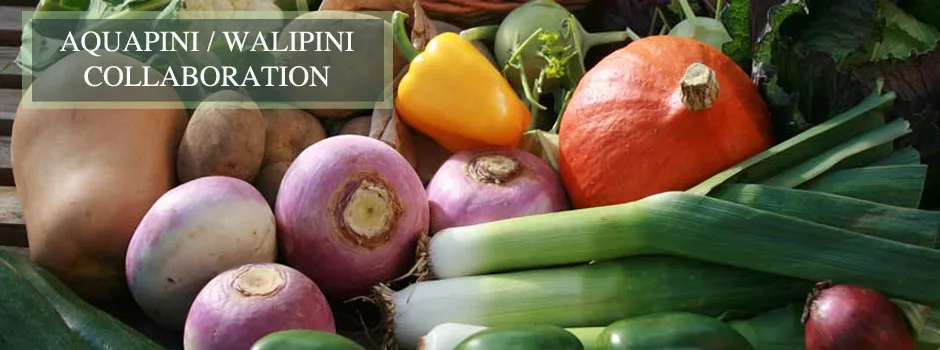
Aquapini and Walipini Global Collaboration
One Community is open source project-launch blueprinting and free-sharing everything needed to create comprehensive sustainability and build 7 different sustainable village prototypes as a path to collaborative global change for The Highest Good of All. Our goal is to provide everything needed to duplicate all aspects of One Community and then lead a global collaborative to evolve each component even further. This page will evolve to include:
- Detailed instructions on how to contribute to the global collaborative
- Ongoing and ever-evolving list of projects using our blueprints and collaborating with One Community
- Additional resources, adaptations, and other useful content provided by global collaborative partners
RELATED PAGES
AQUAPINI & WALIPINI OPENS SOURCE HUB | OUR OPEN SOURCE PURPOSE
WAYS TO CONTRIBUTE TO EVOLVING THIS SUSTAINABILITY COMPONENT WITH US
SUGGESTIONS | CONSULTANTS | PIONEERS
INSTRUCTION ON HOW TO CONTRIBUTE TO THE GLOBAL COLLABORATIVE
At this phase of development anyone interested in contributing to the global collaboration related to the aquapini and walipini food production structures can do so by helping us research the plants we will be planting as phase one of development. This tutorial, however, is also purposed to provide the specific formatting and details we would suggest for:
- Others to use if you would like your websites to match the formatting of ours
- Others to use as an example template for any open source food production and education project
- Anyone who would like to contribute to expanding the global archive of plants and trees capable of being grown in these structures. If you want to make the archive better, this is the specific format we need the information in so we can efficiently build out the necessary website infrastructure here on our site so it is formatted like all the related pages
PURPOSE OF THIS COLLABORATIVE TUTORIAL
- Clarify what is needed for each plant/tree section/description
- Serve as a duplicable/copyable guide for creation of plant/tree descriptions
- End result that is comprehensive, interesting, and useful to the mainstream public
- End result capable of website insertion without additional editing and/or formatting
- End result that functions as an ongoing guide for those in global collaboration with us
THIS IS TO CREATE SUBMISSIONS THAT ARE
- Easy to understand
- Attractive to look at
- Consistently formatted
- Filled with interesting and useful facts and information
THE FOUR KEY COMPONENTS TO THIS GUIDE THUS FAR
- Plant Template
- Tree Template
- Layer 2 and 3 Pages Outline
- How to format images and add them to the site
EXAMPLES OF PAGES DEMONSTRATING THIS FORMAT
PLANT TEMPLATE
HOW TO USE THIS CONTENT
- Copy content into your working google document
- Replace copied information with your new content and details
- Double check your content using this template and the “double check this” section
- Format no shorter than blue bold “!!” and no longer than red bold “!!“
COPY AND PASTABLE TEMPLATE (copy all below to your GDoc)
Title (NOTE LENGTH LIMIT)
!!#1T :: Latin name (Common Name, Common Name, Common Name)!!
Picture (NOTE SHAPE)
Use Google Images to find a (more square than rectangular) delicious or amazing picture of the plant. If you aren’t sure, give me several. Click here for post-formatting examples.
Plant Description (NOTE LENGTH LIMIT)
This paragraph is the correct length. Copy this to your google doc and replace this text with your own text falling within the exclamation point guides. This description should be interesting and useful information about color, smell, taste, cooking uses, household uses, medicinal uses, etc. Make sure this paragraph does not contain any information that would !! be better put in the Placement or Cultural Considerations !! categories.
Placement (LIMIT 8 LINES)
This description can be as long as you like and should include details on ALL reasons you chose to put the plant in it’s current location: sun considerations, color, insect repellent, bee attractant, harvesting, surrounding plant considerations, etc.
Cultural Considerations (MINIMUM 5 – MAXIMUM 15)
!!This line is the maximum length that any Cultural Consideration you list should be—>!!
Lines should listed from smallest to largest and include details regarding: soil, irrigation, pruning, propagation, planting, pests and diseases, fertilization, etc.
Additional Information (1-3 LINKS MAXIMUM)
Include wikipedia link and up to two other good resource links you may have found.
DOUBLE CHECK THIS (from top to bottom)
> Is the title correct?
- Not longer than the “!!” above
- No bold, italicization, or other formatting
- Common names in parenthesis and capitalized
> Is the picture close to square or of something that could be put in a square?
> Is the description correct?
- Longer than the “!!” and shorter than the “!!“?
- Is it interesting information (color, smell, taste, household/health uses, etc.)
- Is it grammatically correct, fun to read, and easy to understand?
- Does it only contain information not found in the Plcmnt and C.C. sections?
> Is the Placement section complete and focused on placement related stuff
> Is the Cultural Considerations section complete and in order with 5-15 examples
TREE TEMPLATE
WHAT’S DIFFERENT
The tree template is exactly the same as the plant template except:
- We need TWO pictures
- We need TWO proper-length 1-paragraph descriptions
Picture (NOTE SHAPE)
Use Google Images to find TWO (more square than rectangular) quality picture of the plant. If you aren’t sure, give me several. Click here for post-formatting examples.
- The first picture should be of the whole tree
- The second picture should be of the edible component looking delicious or relevant to why we chose this tree in the first place
Plant Description (NOTE LENGTH LIMIT(s))
This paragraph is the correct length. Copy this to your google doc and replace this text with your own text falling within the exclamation point guides. This description should be interesting and useful information about color, smell, taste, cooking uses, household uses, medicinal uses, etc. Make sure this paragraph does not contain any information that would !! be better put in the Placement or Cultural Considerations !! categories.
TWO PARAGRAPHS
- The first paragraph is interesting information about the TREE/BUSH/etc.
- The second paragraph is about what it provides us
Be sure none of the information in these two paragraphs is stuff that would be better placed in Placement or Cultural Considerations sections
DOUBLE CHECK THIS (from top to bottom) SO IT MEETS SAME STANDARDS AS PLANT DESCRIPTIONS
> Is the title correct?
- Not longer than the “!!” above
- No bold, italicization, or other formatting
- Common names in parenthesis and capitalized
> Is the picture close to square or of something that could be put in a square?
> Is the description correct?
- Longer than the “!!” and shorter than the “!!“?
- Is it interesting information (color, smell, taste, household/health uses, etc.)
- Is it grammatically correct, fun to read, and easy to understand?
- Does it only contain information not found in the Plcmnt and C.C. sections?
> Is the Placement section complete and focused on placement related stuff
> Is the Cultural Considerations section complete and in order with 5-15 examples
LAYER 2 AND 3 PAGES OUTLINE
HOW TO USE THIS SECTION
This section describes what will end up on the layer 2 and 3 pages related to everything we grow including:
- What will be on each of these pages
- How to “capture and store” useful information/facts you find for later use
WHAT WILL END UP ON EACH OF THESE PAGES
LAYER 2 PAGES – MORE INFORMATION
- History details
- Additional use details
- Fun facts
- Purchasing details
- Frequently Answered Questions
- What else?
LAYER 3 PAGES – INFORMATION FROM OUR EXPERIENCE
- Specifics related to our planting experience
- Specifics related to our maintenance experience
- Recipes for use
- Input from the global collaborative we will be leading
- What else?
HOW TO CAPTURE AND STORE USEFUL INFORMATION/FACTS YOU FIND
Seeing what we will be adding in later, if you find useful information, just add it to the relevant Google Doc below the stuff we’ll be putting on the website. You can do this in any format you like but PLEASE BOLD IT, ITALICIZE IT OR ADD IT IN A DIFFERENT COLOR. This is extremely important to us web design folks so we can find what we need and put it up quickly.
HOW TO FORMAT IMAGES
- Open google doc with source information
- Copy complete GDoc into email and email it to yourself
- Open Photoshop image templates for both Trees and Single Plants
- Drag and drop the best picture and plant into the appropriate template
- Format the picture to fit the existing picture (formatting square tool > Right click > Free Transform > change image > hit enter)
- “Save image for web” (Shift+alt+Command+S) with the settings: Medium (top right) and Size 90 X 90 –> Hit Enter to Save
- Change name to: “#-All Plant Names-aquapini-walipini-planting.jpg” so it looks something like this: 16-Iboza-riparia-iboza-musk-plant-aquapini-walipini-planting.jpg — Note that the # is the number of the plant on the page
- Save image for easy reference in the file folder specific to the house the plant is in
Note: Once you do #’s 5,6, and 8 the first time, Photoshop will remember your settings
HOW TO ADD IMAGES TO THE WEBSITE
- Log into website as an admin and navigate to the page you’ll be editing
- Place cursor before the description paragraph where you want the image
- Click “Add Media Button”
- Drag appropriately formatted image from correct folder to Insert Media page
- For “Alt Text” add all plant names with commas between them as well as this text: aquapini, walipini, organic food, grow your own food, food self-sufficiency, Highest Good food, One Community, open source food, sustainable food, eco food, healthy food, DIY Food, open source food, gardening, diverse food (and any other terms you think would describe what we are creating)
- For “Description” use the plant description provided on the Google Doc and then add the URL for the page you are editing at the end of the description too
For “Attachment Display Settings use:
- Alignment: Left
- Link to: None
- Size: Full Size
- Click Insert Into Page
- Wait for it to show up on the page and then click the image to edit it and on the page that comes up add the name you recognize most to the “Title” field
- Click “Advanced Settings” tab next
- Paste this into the “Styles” field: border: 2px solid black; margin-right: 15px; margin-top: 12px;
- Click “Update”
- Check that everything looks right
COLLABORATIVE PROJECTS
This section will evolve as an ongoing and ever-expanding list of projects using our blueprints and collaborating with One Community.
COLLABORATIVE PROJECT OPEN SOURCE CONTRIBUTIONS
This section will evolve as an every expanding archive of additional resources, adaptations, and other useful content provided by our global collaborative partners.
 One Community
One Community

